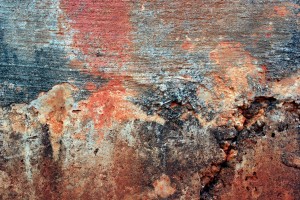 If there’s one surface that we are responsible for maintaining that we believe doesn’t need a lot of maintenance, it’s concrete. This outdoor material is supposed to be maintenance-free, one step away from being natural ground. But over time, concrete is exposed to a lot and needs to be taken care of. After years of weathering the snow, rain, and sun, concrete needs some tender loving care every now and then to keep it looking its best. As concrete is often a big investment in facilities, it is crucial to properly maintain it so it doesn’t deteriorate faster than necessary. In this article, we will discuss the best ways to take care of concrete and share some resources that can help make the process easier.
If there’s one surface that we are responsible for maintaining that we believe doesn’t need a lot of maintenance, it’s concrete. This outdoor material is supposed to be maintenance-free, one step away from being natural ground. But over time, concrete is exposed to a lot and needs to be taken care of. After years of weathering the snow, rain, and sun, concrete needs some tender loving care every now and then to keep it looking its best. As concrete is often a big investment in facilities, it is crucial to properly maintain it so it doesn’t deteriorate faster than necessary. In this article, we will discuss the best ways to take care of concrete and share some resources that can help make the process easier.
While there are many methods of cleaning concrete, the best and most widely used method is using a pressure washer. Pressure washers use a high-pressure stream of water to remove dirt and debris that get embedded in concrete over time. While some pressure washers can be expensive, it is worth it to buy one if you are going to use it regularly to maintain your facility. It is also possible to lease them.
If you and your team are responsible for many square feet of concrete (some examples are tennis courts, parking lots, swimming pools, parks, etc.), then it may be worth the investment to purchase a pressure washer.
Determining how often to pressure wash concrete depends on how much wear and tear the concrete at your facility accumulates. But a good rule of thumb is to pressure wash concrete a minimum of 2 times each year. If concrete receives excessive weather runoff and other element exposure, you should wash it even more frequently.
When pressure washing, be sure to use slow, even strokes over the concrete on the level of pressure and width that works best. Never leave the pressure washer in one place on the concrete for too long or you may risk breaking the concrete. Many people find it hard to believe that a stream of water can be strong enough to break concrete, but the stream of water is very strong and can pose a risk of damage to your concrete if left to press the concrete for too long.
Sealers
Aside from regular cleanings, one of the best ways to keep your concrete looking good is to use a sealer. A sealer is a chemical compound that dries on the concrete, protecting it from damage. Different sealers are designed to protect from different elements, so find the sealer that protects from the element that poses the greatest danger to your concrete.
If you are maintaining a pool deck, chlorine and other pool chemicals can be harmful to concrete surfaces. For this type of facility, it is recommended to seal the concrete every year to keep as many of these chemicals away from the concrete as possible. You can also have a slip-resistant additive added to the sealant process to help make the surface safer for pool patrons.
We now carry two popular concrete sealers: Barrier Floor Sealer, and Trojan Masonry Sealer.
To use sealers, clean the concrete surface first by sweeping and mopping as well. Allow the surface to dry completely for at least 24 hours (without rain or too much humidity) before applying sealer. Then, pour the sealer on the surface evenly, making sure to cover the entire surface. Allow to dry completely before using, but do not use fans or other drying accelerators. Dry times depend on temperature and humidity.
Cracks in Concrete
One of the most conspicuous and common problems with concrete is cracks. Unfortunately, cracks cannot completely be avoided, even when you take precautions to prevent them. While many facility managers or home owners become concerned when they see concrete cracks, most cracks are not symptoms of a larger problem. Cracks are natural and come about through shifts in the ground beneath over time. Ice and snow freezing and melting repeatedly also causes cracks in concrete.
When you do see cracks in your concrete, it’s better to have them repaired as soon as possible. While they may not seem like much of a threat at the time, they could be the source of other problems later on. For example, water can seep through the surface, causing the ground beneath to wash away. Plants can also sprout through the cracks, making repair more difficult.
You can seal cracks in concrete using either concrete mortar or non-hardening UV-safe silicon. If your concrete surface has too many cracks, a lot of surface damage, or plenty of patchwork, it may be time to have the concrete replaced.
While concrete may seem to need no maintenance at all, taking these steps annually for your concrete surface will help it last longer, reduce the risk of damage, and be much more attractive for those who use your facility. Next week in part 2, we will discuss how to remove common and stubborn stains from concrete.





